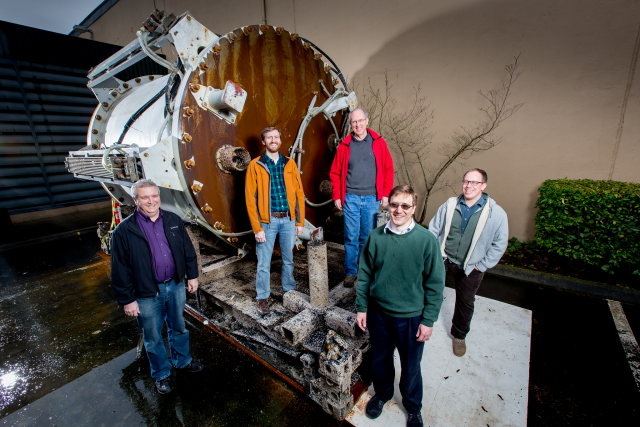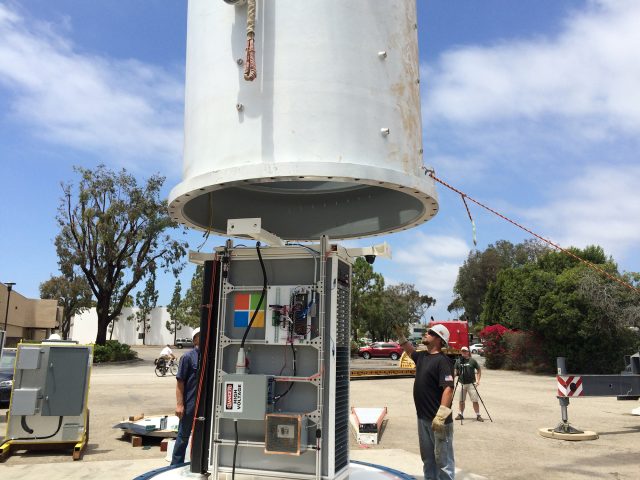
Air conditioning is one of the biggest costs in running data centers. Traditional data centers use as much electricity for cooling as they do for running the actual IT equipment. Accordingly, much of the innovation seen in the high-density cloud server space has been to develop data centers that are cheaper to cool and hence cheaper to run. With its much higher heat capacity than air, water has become the coolant of choice, pumped around and between the computers to transport their heat outside.
Microsoft has demonstrated an experimental prototype of a new approach: instead of pumping water around the data center, put the data center in the water. Project Natick is a research project to build and run a data center that's submerged in the ocean. The company built an experimental vessel, named the Leona Philpot, and deployed it on the seafloor about 1 kilometer off the Pacific coast. It ran successfully from August to November last year.

As well as the obvious cooling advantage this brings, Microsoft argues that this kind of data center will bring other benefits, too. About half of the world's population lives within 200km of the ocean, and so the ability to put data centers in the water means that they can always be located close to major population centers. This in turn ensures that they offer low latency connections. The company also says that the self-contained units can be deployed quickly, within 90 days, rather than the 2 years it takes to build a conventional building, or the 1 year that Microsoft says its fourth generation data centers take. The units could also be paired with tidal power generation to further reduce their environmental impact.
Whether we'll actually see Natick-style data centers around the world remains to be seen, with Microsoft saying that it's still "early days" in evaluating whether the concept can actually be adopted.

Being stuck on the bottom of the ocean does have some obvious issues: Microsoft doesn't have a team of SCUBA IT staff to fix things. Instead, the concept is that each Natick unit would operate for five years without maintenance and then be hauled up to the surface to have its internals replaced.
Many of Natick's concepts are already in wide use. There's a good reason that most power plants are built near rivers and oceans: it's because they use those rivers and oceans as a convenient heatsink in which they can dump their unwanted thermal energy, and this hasn't gone ignored by cloud operators. Google in 2011 opened a data center using sea water to provide its cooling, and since 2009 Microsoft has used shipping containers packed with servers and network infrastructure to provide rapidly deployable, modular, self-contained data center deployments. Natick puts these two ideas together.
reader comments
123